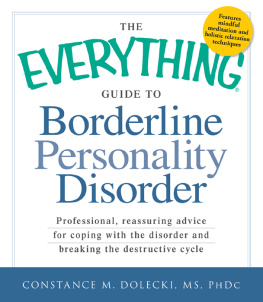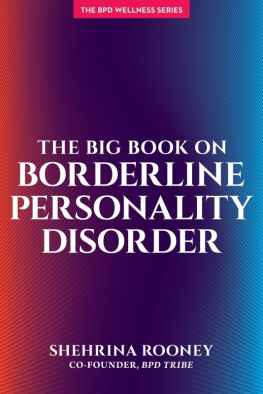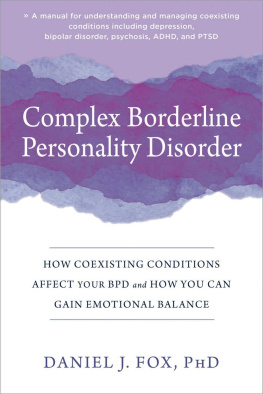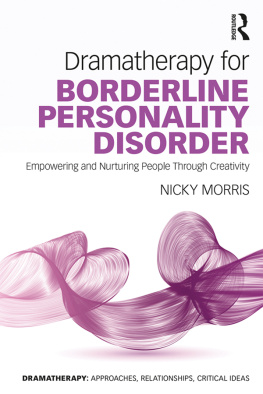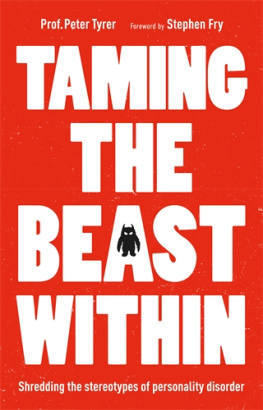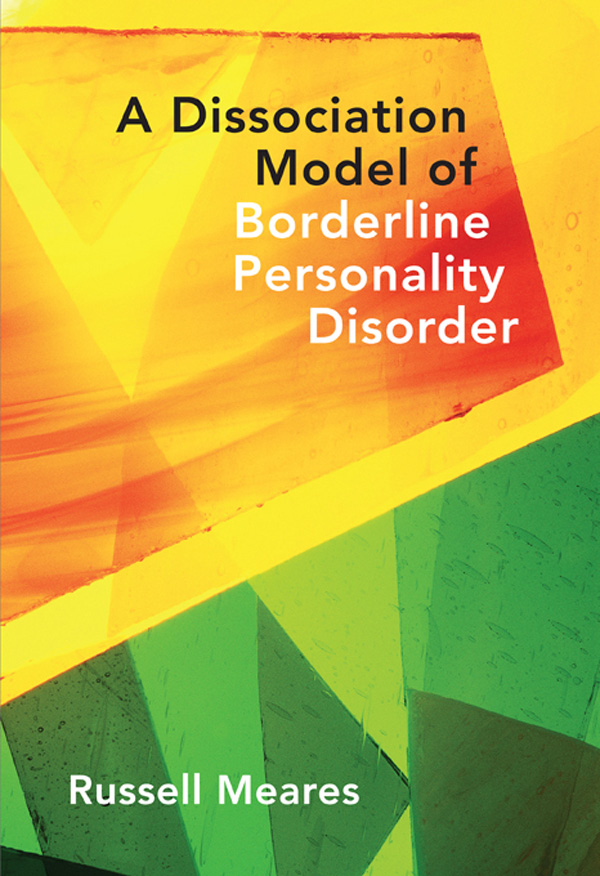The Norton Series on Interpersonal Neurobiology
Allan N. Schore, PhD, Series Editor
Daniel J. Siegel, MD, Founding Editor
The field of mental health is in a tremendously exciting period of growth and conceptual reorganization. Independent findings from a variety of scientific endeavors are converging in an interdisciplinary view of the mind and mental well-being. An interpersonal neurobiology of human development enables us to understand that the structure and function of the mind and brain are shaped by experiences, especially those involving emotional relationships.
The Norton Series on Interpersonal Neurobiology provides cutting-edge, multidisciplinary views that further our understanding of the complex neurobiology of the human mind. By drawing on a wide range of traditionally independent fields of researchsuch as neurobiology, genetics, memory, attachment, complex systems, anthropology, and evolutionary psychologythese texts offer mental health professionals a review and synthesis of scientific findings often inaccessible to clinicians. The books advance our understanding of human experience by finding the unity of knowledge, or consilience, that emerges with the translation of findings from numerous domains of study into a common language and conceptual framework. The series integrates the best of modern science with the healing art of psychotherapy.
A Norton Professional Book
A Dissociation Model
of BORDERLINE
PERSONALITY
DISORDER
Russell Meares, MD

W. W. Norton & Company
New York London
CONTENTS
Expanded Contents
Acknowledgments
I MPETUS TOWARD THE EVENTUAL PRODUCTION of this book began in the early 1980s when a group of enthusiastic young people at Westmead Hospital, Sydney, mainly trainee psychiatrists and senior psychiatric nurses, set out with me and some senior colleagues to develop a program for the treatment of a condition then deemed intractableborderline personality disorder (BPD)which had only recently been given recognition as a formal diagnostic entity. Out of these efforts developed a much larger program. I wish to thank all those who took part in that pioneering effort.
Four people who took part in that initial endeavour were able to continue with the project. They are Joan Haliburn, George Lianos, Michael Williamson, and Janine Stevenson, who together with Philip Graham, Leo van Biene, Tessa Philips, Anthony Korner, and Jai Bains form the faculty of Master of Medicine (Psychotherapy) at Sydney University, which is devoted to training psychiatric and other mental health professionals in the treatment of BPD by means of the Conversational Model. This faculty has contributed, through seminars, conferences and so forth, to the development of an understanding of BPD derived not only from clinical data, but from neurophysiology, linguistics, and developmental data. I have been extremely fortunate in having such people join me in the quest which this book reflects. They have provided me with immense support.
The research program initially focused on outcome studies, the data for which was mainly gathered by Janine Stevenson. I thank her for her tireless efforts. An essential neurophysiological component was added to the research endeavor by the work of Evian Gordon, who developed a scientific group now called the Brain Dynamics Centre, and led by Lea Williams. This group included Dmitri Melkonian, a mathematician and neurophysiologist. His work has been invaluable in providing the data central to the development of the thesis of psychic disintegration, which is the core of this book. I am very grateful to him for the energy, commitment, and creativity he has brought to the program. Lea Williams and her colleagues have provided another essential element in the research background to this book. She has been studying the cerebral processing of emotion, with a particular focus on the effect of trauma. These findings have provided a unique understanding of the unconscious perception of traumatic experience. She and her collaborators in this venture, Richard Bryant and Kim Felmingham, have given me great support and stimulus.
Help in understanding the phenomena of dissociation and the borderline experience has also come from further afield, from Onno van der Hart in Holland and Bessel van der Kolk at Harvard. I have valued greatly the contribution they have made to the development of our work through their visits to Sydney and other venues.
Our third research theme, linguistics, has been led by David Butt. I thank him for the generosity of his contributions to the program and for the intellectual excitement he has brought to our discussions.
I have also been very lucky in my editors. Allan Schore has been an unfailing source of stimulation and encouragement. His important notion of right-brain-to-right-brain relating in motherinfant interaction marries perfectly with the disintegration theory of BPD outlined in this book, and is an essential element of it. Deborah Malmuds patience and guidance was a great support while I struggled with this work.
The person to whom I am most particularly grateful is Michelle Phillips, my secretary and assistant. Without her unflagging efforts, skills, and competence in a number of areas, and her steadiness and good humor, I do not think I could have completed this work.
Finally, I thank my wife Susanne, who has provided the necessary surround in which creativity can grow.
Chapter 1
INTRODUCTION
THE BORDERLINE EXPERIENCE
F OR MANY YEARS what is now called borderline personality disorder (BPD) was considered an intractable condition. Those who suffered from it were deemed unanalyzable. In the early 1990s, however, therapies specifically designed to treat BPD began to emerge (Linehan et al., 1991; Stevenson & Meares, 1992). These were followed by a number of reports on the effect of other ways of treating BPD (Bateman & Fonagy, 1999; Clarkin et al, 2007; Giesen-Bloo et al., 2006).
At present, however, as pointed out in a recent authoritative review, there is no evidence to suggest that one specific form of therapy is more effective than another. Further research is needed on the diagnosis, neurobiology, and treatment of borderline personality disorder (Leichsenring et al., 2011, p. 74). The next phase in the search for effective treatment of BPD will depend upon an understanding of the central disturbance of BPD, which will provide a logical basis for treatment methods that must be directed toward the core of the condition. This book outlines a proposal concerning such a core. The origins of this proposal are found in the typical experience of those afflicted with BPD.
The heart of BPD is conveyed by our first meeting with Adele, a woman of about 30. Our conversation begins with her struggle to find words, as she tries to say what it is that troubles her most and what brings her to the clinic. She speaks of a barely expressible pain of living, of moving not merely from day to day, but from minute to minute, each step seeming impossible, as if paralyzed by an overwhelming sense of emptiness. Underlying it, and so omnipresent as to be part of normal existence, is fear, which is without shape or object. Some of it involves aloneness. Time by herself is hardly to be endured yet in the presence of others she feels an isolate and unknown. She lives as if on the edge of a void, which those who suffer this illness often call the black hole. From time to time, she is thrown over, usually by some circumstance of daily life. A suicide attempt might follow. She has attempted suicide many times.



